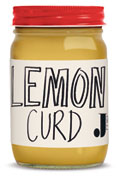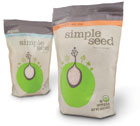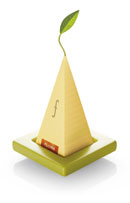But, first, a little fashion history.
The “No Dress Dress”
Mainbocher was a designer from Chicago that rose from the obscurity of the American Midwest to the heights of Paris couture. He opened his couture house in 1929, at the start of the Great Depression, a time when blue chip companies were going under and the financial markets were collapsing. His simple “Less is More” philosophy resonated strongly with his clientele. Using an analogy that “a dress is packaging for a woman’s body,” one could say he was the original Zen packaging designer.Only ladies of the Social Register could afford Mainbocher’s high priced, simple sheaths and suits. Mainbocher’s classic designs were impeccably tailored, using only the highest quality fabrics and materials. His customers were known to bring in their dresses from previous seasons for a new lining (this was called a tune-up), just like another status symbol of the Social Register, the Rolls Royce. I like to think of it as refillable packaging.
The designer felt that, in order for a woman to be well turned out, she should turn her thoughts inward. His “No Dress Dress” (as it was often called) was designed to reflect a woman’s “inner beauty.”
If you think about it, that’s exactly what a great package design should do-reflect the quality and beauty of the product contained within. The Mainbocher “dress as package” analogy reinforces the idea that, given a top quality product, no matter how basic, companies shouldn’t be afraid to invest in top quality materials to create a well-designed, luxurious package. A Basic Deluxe approach to packaging is one way a company can differentiate itself from the competition-and thrive, not just survive-in today’s tough business climate.

Jme's glass jars create a deluxe feel, while typography that appears handwritten conveys the idea of an "everyday pantry."
Jme
The products and packaging for the new Jme food line by celebrity chef Jamie Oliver absolutely wowed me with their Basic Deluxe sensibilities. Pearlfisher UK created the identity and packaging for this hot new brand.The eclectic collection is inspired by Jamie Oliver’s relaxed approach to eating, entertaining and life. To create the line, the celebrity chef brought together a team of fantastic artisans, talented designers and first-class food producers. The products are everyday staples, (i.e., basic); they are also incredibly well made and beautifully executed (i.e., deluxe).
Take, for example, the lemon curd developed for Jme by Rich Sheepshanks and Peter Kerr. Their recipe is “just like mum’s.” It’s made in small batches, in kettles, by hand. These jam and chutney makers believe in making food that “stirs the emotions.”
You can see a video of the curd being made at www.jamieoliver.com and listen in as the chefs talk about their handmade approach. They describe their production methods as having more of a “kitchen feeling” than a “press the button” factory/mass production feeling.
The packaging for this high quality artisan product is a basic glass jar with a twist-off lid. The label features “hand-printing” that is simple and basic, almost childish. The word LEMON is double-lined, and a bold Jme logo anchors the bottom right corner. A red lid and the basic white label offset the rich yellow of the curd inside the jar. You can tell exactly what the product is an aisle away. It reminds you of something you’d find in a gourmet chef’s pantry.
There are many other high quality artisan products on the Jme line, and they’re all packaged with a Basic Deluxe sensibility. Two of my favorites are the Mixed Olives and the Seville Orange Marmalade. Both labels have a handwritten feel, but these products are offered in glass kilner jars (the ones with the metal flip lever) that cleverly reinforce the reference to their homemade (i.e., premium) heritage.
Jamie believes that marmalade is one of the most brilliant British inventions, so he made sure his is a proud representation of that heritage. His version is a classic, fine-cut marmalade made from Seville oranges (a particularly tart orange grown around the Mediterranean) that is sweet and sticky, with a lovely bitter tang.
The Mixed Olives are marinated with the typical Sicilian flavors of hot chili (or chilli as the Brits spell it), crushed garlic, black pepper and premium, quality extra virgin olive oil. It’s definitely not a basic, boring jar of olives.
All of the Jme products (olives, marmalades, sauces) are essentially basic pantry items, yet they are packaged and marketed as deluxe offerings. The provenance of the ingredients (Seville oranges, Sicilian chili), as well as the quality (extra virgin olive oil, real lemon zest) confers premium status. The small batch production methods and the packaging (real glass, kilner clasp lids, and “hand lettered” labels), both contribute to the authentic, deluxe feel.
The end result is that Jme “everyday pantry” products are perceived to be “deluxe.” It’s a good recipe for superb results, as the brand reports that sales have far exceeded initial production plans.
Back to Fashion
Basic Deluxe is not a new concept. Coco Chanel found fame in the 1920s via her “poverty du luxe” approach to design. She found her inspiration in Deauville fishermen and French schoolgirls, and then interpreted the classic designs in the finest of fabrics, with handmade details and exquisite accessories.Karl Lagerfeld designs for Chanel today, and utilizes the same “poverty du luxe” philosophy that Chanel did over 80 years ago. Each season he masterfully reworks the signature silhouettes, but manages to make them cleverly modern.
Lagerfeld recently wowed the fashion press when he presented his Spring 2010 haute couture fashion show against a backdrop of a barnyard. The runway was a dirt floor, the props were weathered barn wood, and the models emerged from a haystack. It was an intentional juxtaposition (barnyard chic) that wowed the fashion world and proved once again that Lagerfeld is, indeed, a master of Basic Deluxe.

Simple seed reflects its organic nature with the brown paper bag-like appearance of its packaging.
Simple Seed Brown Rice
There are nearly 6.5 billion people in the world today, and more than half of them would go hungry without rice. Rice cultivation and consumption date back over 4,000 years. It’s safe to say that rice is about as basic a staple as you could find.That’s why when Gulf Pacific Rice, a company that previously only made products for private label or commercial distribution, decided to create a new consumer brand, it knew it had a unique challenge on its hands.
After receiving organic certification on select rice crops, Gulf Pacific decided to create a deluxe organic brand, one that would resonate with a consumer who cares about quality, good nutrition, and the environment. The company turned to Capsule in Minneapolis for the creation of the brand and the design of the packaging.
The brand simple seed was developed and designed to showcase the inherent simplicity of rice and to highlight the natural and organic heritage of the product. The name is simple, hearty and memorable, just like the product.
Gulf Pacific’s brown rice is carefully milled to remove the outer hull. Mill operators personally grade the finished product by comparing the color of the kernels with strict quality control standards. Hourly tests ensure that the brand’s brown rice has the characteristic tan color and nut-like flavor that sets it apart from the mass market.
Creative director Brian Adducci and designer Dan Baggenstoss wanted to showcase those attributes. They chose a natural material reminiscent of a brown paper bag, but with more heft and shape. The see-through window reveals the color and consistency of product inside. The bold, lower case typeface reminds us of the humbleness and basic goodness of the product. The earth icon reminds us that the inherent goodness inside comes from nature, and helps to sustain the planet.
The new package stands at attention on a shelf (unlike conventional plastic bags of rice that lay inert on store and pantry shelves), thereby differentiating simple seed from other bags of rice. It features a resealable zip lock top for freshness and convenience. Capsule’s Aaron Keller says the package is “elegant, not crunchy.”
The functional elegance of the packaging enhances the premium aspects of a basic, commodity product with a deluxe heritage. It’s the same kind of magic that a little black dress, with proper accessories, works on a woman’s wardrobe. Voila! A perfect execution of Basic Deluxe that even Coco would be proud of.

Just about any product, from a tea kettle (Michael Graves for Target) to tea bags (Tea Forte) to cell phones (the iPhone) can follow the Basic Deluxe concept.
Recipe for Success
I think both Mainbocher and Chanel would approve of the philosophies behind the Jme and simple seed brands. Thankfully there are still a few visionaries out there that understand that there are things, and then there are…Basic Deluxe things.Basics will always be in demand. But no company wants their products to be perceived as commodities. When that occurs, price becomes the main point of differentiation, and that game is just a downward spiral.
The lesson here is that just about any product, from a tea kettle (Michael Graves for Target) to tea bags (Tea Forte), from cell phones (the iPhone) to sea salt (Fleur du Sel French Sea Salt) can be “premium-ized.” In most cases, it’s the package on the shelf that will be the first indicator that something special is inside.
When times are tough, it’s human nature to revert back to the comfort of basics. But no one wants to give up quality in doing so. In fact, precisely BECAUSE times are tough, we feel as though we DESERVE a small indulgence. Basic Deluxe is a powerful paradox-a recipe that allows you to have your cake, and eat it too.BP
Robyn Waters is the former vice president of trend, design and product development at Target and is known as the Trendmaster. Robyn is a keynote speaker, author and hired gun visionary for corporate America. Visit Robyn’s website at www.rwtrend.com.
